Yazd Water Museum: Exploring Ancient Aqueducts and More
Yazd, known as the city of windmills and the second living historical city in the world, invites you to explore its renowned ancient qanats at the Yazd Water Museum.
Housed in a beautifully restored Qajar-era mansion that belonged to a famous wealthy merchant called “Haj Ali Akbar Kolahdooz”, the museum showcases a visible qanat running underneath, offering a captivating insight into the ingenious water systems that have sustained life in the arid desert for millennia.
Through an array of photographs, exhibits, and architectural drawings, visitors can delve into the 2000-year history of Iran's unique irrigation methods. Highlights include the builders' early Personal Protective Equipment (PPE), with padded cotton hats and luminous white clothing, and the intricate process of drilling mother wells reaching depths of up to 300 meters.
The museum also features water distribution clocks, used to allocate precise shares of water to households and farms. Join us to learn everything you need to know about the water museum in Yazd.
Interested in visiting Yazd Water Museum?
Check out our Yazd tour packages to find an itinerary that includes visiting the museum
or...
Design your own tailor-made itinerary and include Yazd Water Museum in it by yourself, today!
History of Yazd Water Museum
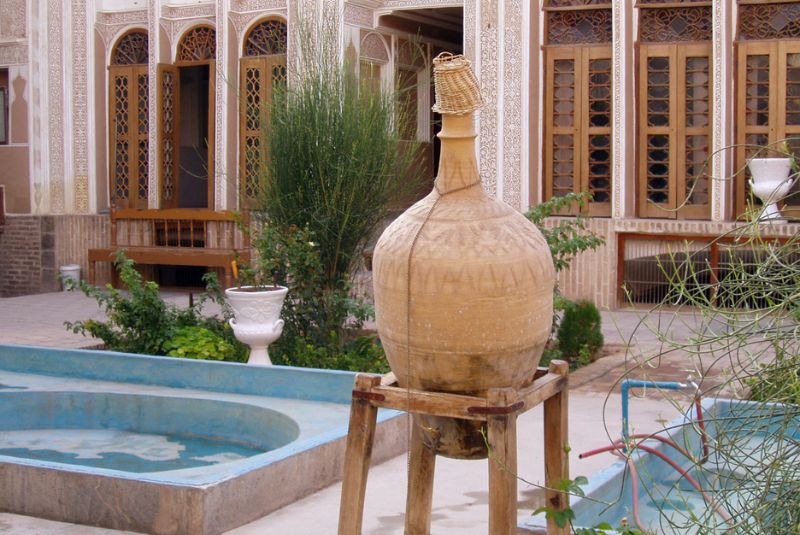
The Water Museum in Yazd has a long history, dating back to 1811, originally constructed by a man named Haj Seyyed Ali Akbar Kolahdooz and his family. It was later transformed into a museum in 2000, coinciding with the first International Qanat Conference held in 2000.
This historical building aims to showcase the immense value and significance of water in desert regions, allowing the general public to visit and learn about this crucial aspect.
The museum serves as a testament to the ingenuity of ancient Iranian water management techniques, highlighting the importance of water conservation and management in arid environments like Yazd.
| Also read about: Chak Chak Pilgrimage Site in Yazd
Kolahdoozha Home

The Kolahdoozha Home is one of the most valuable and notable historical houses in Yazd, significant both historically and in terms of the importance of water in Yazd.
This house can be introduced to history and water enthusiasts alike. Construction of this beautiful and prestigious building for Iran began in 1811 at the request of the late Haj Seyyed Ali Akbar Kolahdouz, a renowned merchant of the Qajar era in central Iran. The construction took about 3 years and was completed in 1814.
The historical Kolahdoozha Home is currently among the assets of the Yazd Regional Water Company and has been designated as the Yazd Water Museum. Visiting this historical house and its fascinating museum is possible for the general public.
| Related: Top 23 Museums in Iran + Photos
Different Sections of the Yazd Water Museum
The Kolahdooz Home, now the Yazd Water Museum, displays over 200 historical artifacts related to water, offering visitors a comprehensive view of traditional water management and daily life in Yazd.
The museum spans over 720 square meters and consists of 5 levels, each section of the house tells a unique story of how water shaped life in the desert city, making it a remarkable destination for history and culture enthusiasts alike. Here are the different sections of the Yazd water museum:
Basement (Level -3)

This is the lowest level of the house and serves as the starting point for the Rahimabad and Zarch qanat branches. Of particular interest is the ancient Zarch qanat, which spans 75 kilometers and dates back 2000 years, still active and mesmerizing to visitors.
In the past, residents used this level to wash their utensils and clothes, benefiting from its consistently cool temperature throughout the year, making it suitable for food storage.
Lower Ground Floor (Level -2)
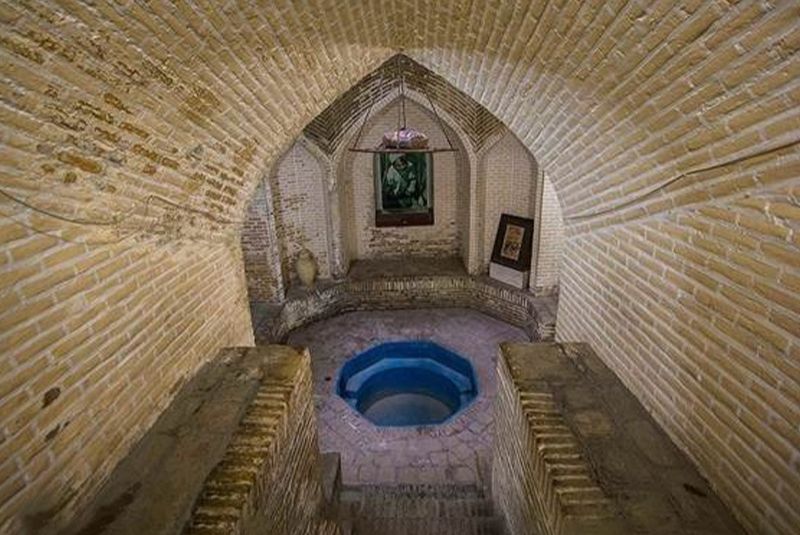
Located 10 meters below ground level, this floor served as a basement and storage area for the house. The term "Payab" refers to the place where qanat water reaches ground level. The lower ground floor features a hexagonal space with a blue water basin where qanat water flows through.
In ancient times, food items were placed on wooden shelves suspended from the ceiling to take advantage of the cool air provided by the qanat water, functioning effectively as a natural refrigerator.
Subterranean and Residence (Level -1)

Below the courtyard surrounding the ground floor rooms, there are numerous subterranean chambers and vaults. During hot summers, residents preferred the cooler temperatures of these chambers for living. Each chamber was designated to specific individuals, akin to the rooms on upper levels, which may intrigue visitors.
Ground Floor (Level 0)

This floor currently houses the Yazd Water Museum and includes various sections such as the Arsi Room, Panjdari Room, Dalan Room, Windcatcher Room, and a large hall among others.
It served as the primary residence for the Kolahdooz family, where they lived alongside their spouses, children, and servants. Each room had its own unique function and significance.
Roof and Well House (Level +1)
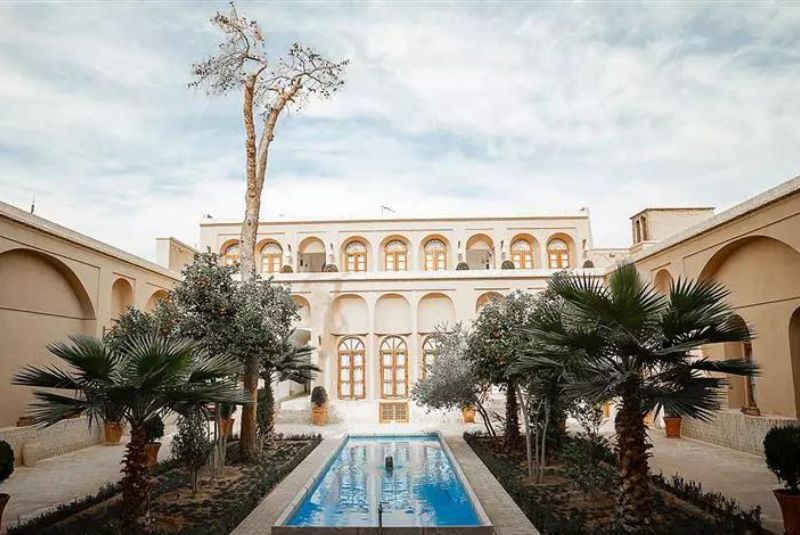
The top floor of the Kolahdooz Home, known as the well house, housed the well and its wheel. This floor facilitated the lifting and distribution of water from the famous Rahimabad qanat for drinking, washing, and other domestic uses.
The innovative water system here predates modern plumbing systems by about 150 years, showcasing advanced engineering for the comfort of its residents.
| Discover: A 4,500 Years Old Tree in Yazd - Sarv-e Abarkuh (Cypress of Abarkuh)
Special Tools Used For Digging Qanat
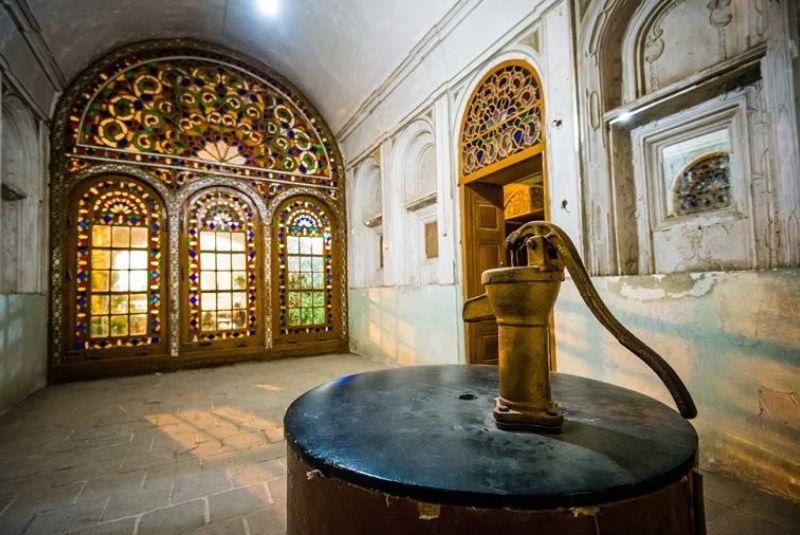
As you may know, qanats are among the most important historical structures of Iranians, recognized and admired globally. It's fascinating to note that Iranian qanats are also listed in UNESCO's World Heritage Sites, shining brightly in recognition.
The Yazd Water Museum exhibits various tools and equipment used for digging qanats, including special picks for digging karez (underground aqueducts), well wheels, the attire of diggers (maqani), tools for measuring water volume, and lighting equipment used during qanat excavation, among many others.
A notable exhibit vividly demonstrates the flow of water within qanats. Additionally, sculptures depict different individuals engaged in their responsibilities related to qanat operations.
One of these sculptures includes those of the maqani (qanat diggers). An interesting detail for museum visitors is the white clothing worn by these individuals.
The reason for their white attire was to be easily visible in the dark and expansive environments of the qanats, enabling them to recognize each other effectively. Some likened the attire of maqani to burial shrouds, symbolizing the constant risk of collapse during digging operations.
Another significant artifact showcased in the museum is the well wheel, one of the primary tools used for well digging. Alongside the well wheel, a sculpture of a well digger stands out, adding a touch of authenticity to the museum's atmosphere.
| Suggestion: Fire Temple in Yazd - The Holy Places Where Zoroastrians Worship God
Water Sharing Devices
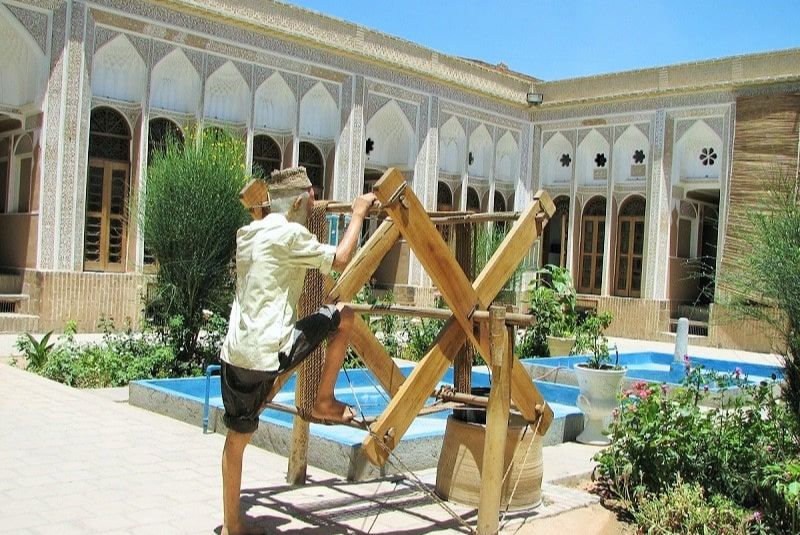
The Yazd Water Museum houses various artifacts related to water distribution, including documents of water buying and selling, and ancient endowment deeds dating back to the time of the Kolahdooz house.
Among the most special and intriguing exhibits in this section are the "Mirab Namehs" (irrigation records) and documents detailing water distribution. In linguistic terms, "Mirab" refers to a chief or commander of water. These individuals were responsible for distributing water from qanats among different users in the past.
Mirabs used a tool called "water clock" to calculate the time of water delivery to each person. Interestingly, the museum preserves the world's oldest water clock, which dates back over 700 years. This water clock is one of the most valuable artifacts in the Yazd Water Museum.
Among other documents preserved in the museum are marriage contracts that specify water as part of the dowry, highlighting the precious value of water akin to gold during that era.
Additionally, there are documents indicating that some benefactors allocated a portion of their water share to widows and orphans.
Historical Utensils and Tools
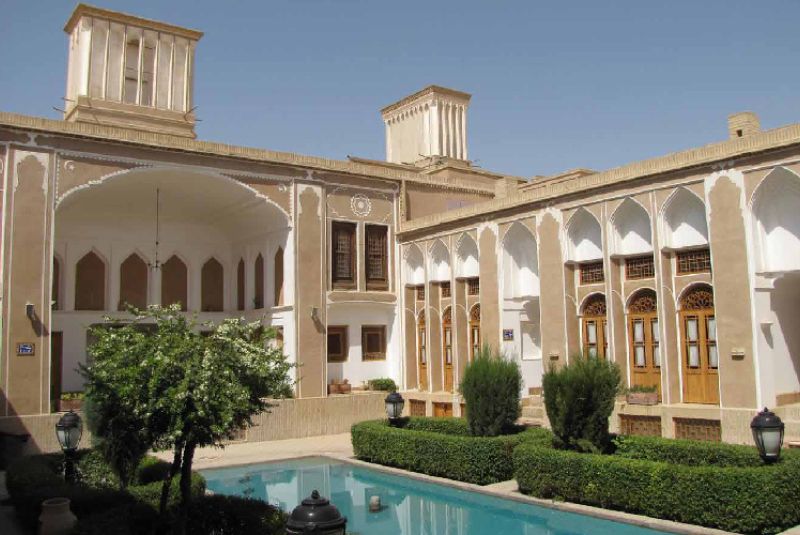
In the past, without pipelines for water distribution, people had to manually transport water from the primary source to their place of use for various purposes. Furthermore, in most households of the past, there was a designated area for water storage.
The Yazd Water Museum houses many historical utensils and tools that were used for storage, transportation, and similar purposes, which can be fascinating for museum visitors.
Among these items are various types of water extraction faucets from reservoirs, ceramic and glass containers specifically designed for carrying and storing water, a series of traditional leather water bags (mashk), and many others. The museum also features a multi-thousand-year-old water cooler, whose name appears in very ancient historical books.
Another valuable artifact in this museum is a glass vessel with side tubes. This double-walled glass container was used in ancient times to cool and purify water. Water would be poured inside, and snow would be placed on top. Gradually, the snow would melt, and the purified, cool water would be extracted from the side tubes for consumption, free from contamination.
| Also read about: Dolat Abad Garden - A Lively Garden in the Middle of the Desert
Where to Eat Near the Yazd Water Museum
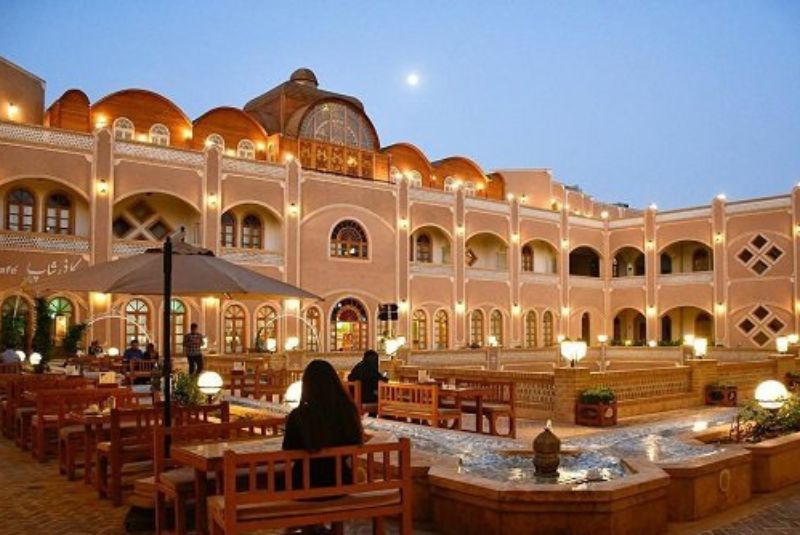
If you're looking for dining options near the Yazd Water Museum, you have several choices within walking distance:
- Yazd Haft Khan Traditional Restaurants: Distance: 750 meters (10 minutes walk) - Description: Offers traditional Persian cuisine.
- Yazd Traditional Restaurant: Located nearby, offering authentic local dishes.
- Hammam Khan Traditional Restaurant: Another nearby option known for its traditional Persian food.
- Shazde Restaurant: Offers a variety of dishes in a pleasant atmosphere.
| Read more: 10 Best Restaurants in Yazd - Foodies Ultimate Guide
Where to Stay Near Yazd Water Museum
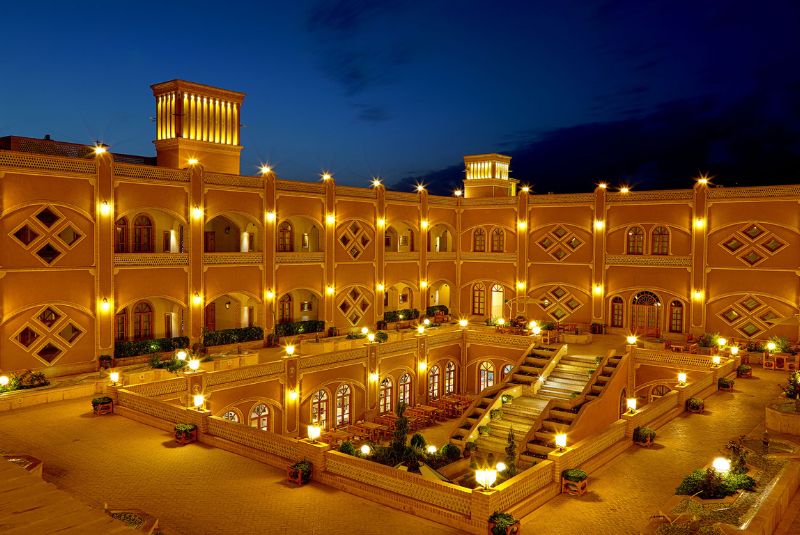
There are numerous traditional and modern hotels in the vicinity of the Yazd Water Museum, catering to various preferences and needs. If you're planning to stay near the Yazd Water Museum, here are some accommodation options ranging from budget to boutique hotels:
Yazd Traditional Hotel
- Type: 2-star budget hotel
- Description: Offers affordable lodging near the museum.
Vali Traditional Hotel
- Type: 3-star budget hotel
- Description: Provides comfortable accommodations within walking distance.
Malek Al-Tojar Traditional Hotel
- Type: Boutique business hotel
- Description: Offers a blend of traditional charm and modern amenities.
| Related: Best Hotels in Yazd for a Memorable Stay
Yazd Water Museum Location
The Yazd Water Museum is located at Imam Street, North of Amir Chakhmaq Square in Yazd.
How to Get There

By Bus from Darvazeh Quran Terminal - Shahid Mahrab Terminal:
You can reach the Yazd Water Museum by taking buses from Darvazeh Quran Terminal to Shahid Mahrab Terminal. From there, you can easily access this notable attraction.
By Bus from Chahar Rah Baha'is - Railway Square:
Another option is to take buses from Chahar Rah Baha'is to Railway Square. From Railway Square, you can walk a short distance to reach the Yazd Water Museum. This route involves a bit of walking but offers a scenic approach to the museum.
Opening time: 08:00 to 19:00
Tourist Attractions Near Yazd Water Museum
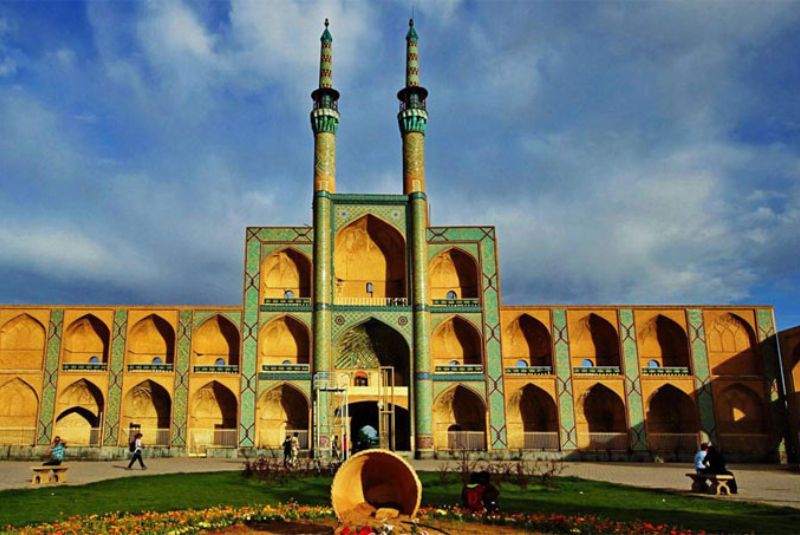
Near the Yazd Water Museum, there are several tourist attractions that offer visitors a chance to enjoy the historical city of Yazd. These include:
- Amir Chakhmaq Square
- Imamzadeh Shahzadeh Fazl Shrine
- Khan Bazaar (Khan-e Yazd Bazaar)
- Panjeh Ali Bazaar
- Jameh Mosque of Yazd with its Clock Tower
- Historical House of Hashemabad
- Many other places throughout the city.
| Also read about: The Towers of Silence in Yazd, Iran
Bottom Line
The Yazd Water Museum offers a journey through centuries of ingenious water management in one of Iran's oldest desert cities. Housed in the historic Kolahdooz House, the museum vividly illustrates the vital role of qanats in sustaining life in Yazd's arid climate for over 2000 years.
From the innovative tools of qanat diggers to ancient water distribution systems, each exhibit unveils the rich history and cultural significance of water in Yazd. The museum also immerses visitors in the cultural heritage of Yazd, showcasing traditional tools, utensils, and documents related to water distribution.
Share your story!
Comment below and let us know about your Experience.
Your story inspires others!


Comment
Leave a Comment